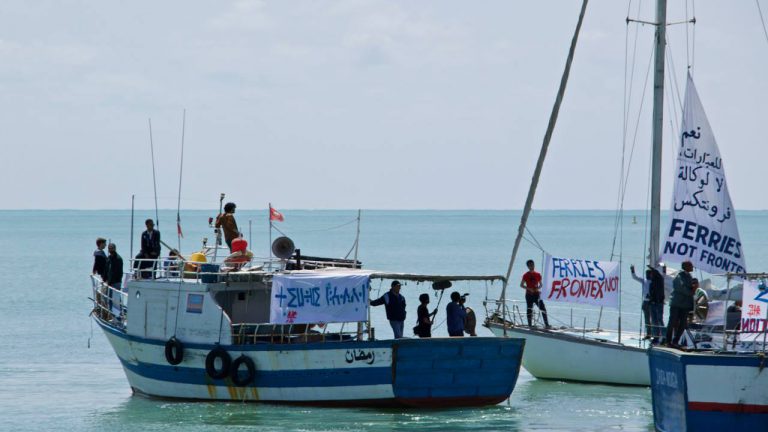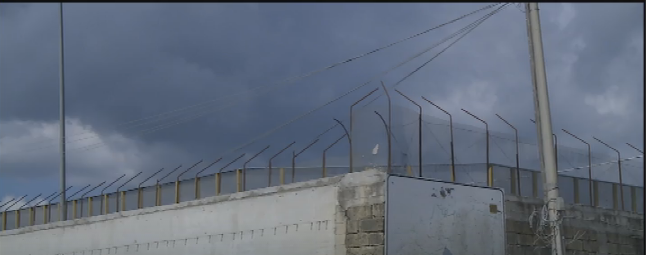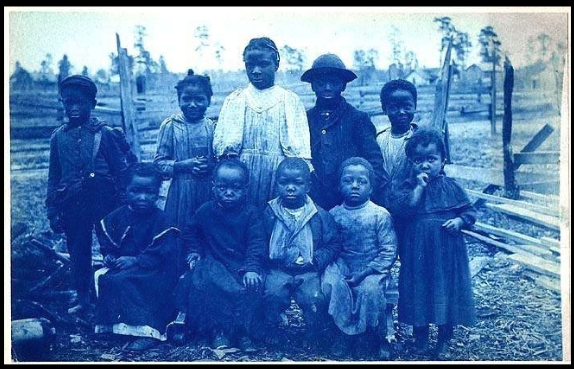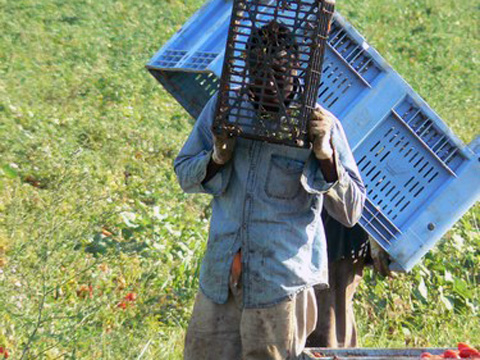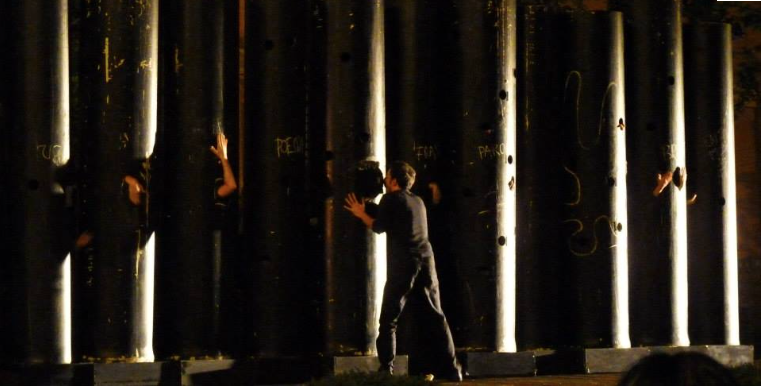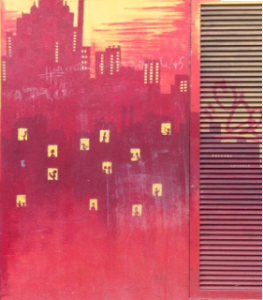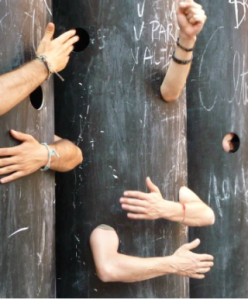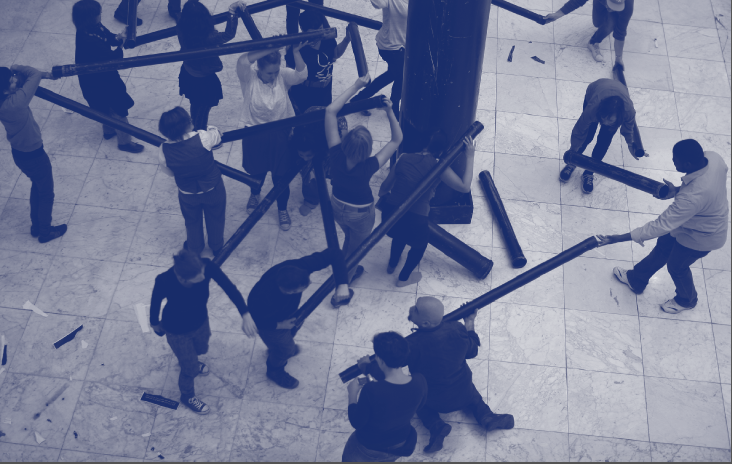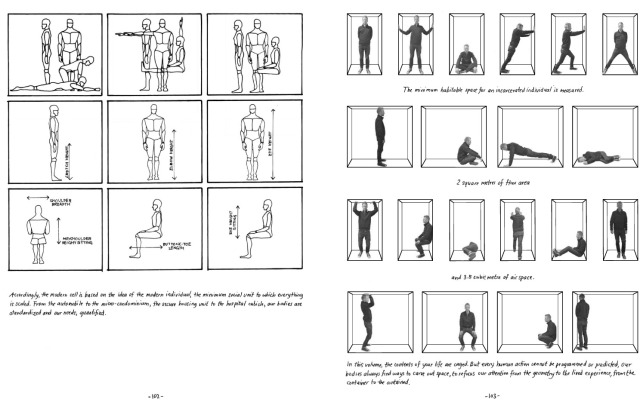1) A Safe Harbour is an open space, where people are welcomed and assisted regardless of their origins, race, gender and class. It is a place that is open to the city, where civil society actors can enter and monitor the situation.
Category Archives: detention
Self-harm
Still more news about the human rights violations internal to the Italian migrant detention system continues to reach the public. In a joint press release, the coalition of LasciateCIEntrare, Legal Team and Osservatorio Migranti Basilicata (OMB) denounce the CPR (Centro di Permanenza per il Rimpatrio) of Palazzo san Gervasio as a site of repression and abuse. On the phone with a local news site, the spokesperson of LasciateCIEntrare, Yasmine Yaya mentions the presence of some particularly vulnerable migrants who are trying to seek asylum and need urgent assistance. At the same time, the organisation denounces the high degrees of psychological stress that leads some inhabitants to purposively inflict self-harm and attempt suicide. In the afternoon of 26 April, a Syrian Kurdish citizen threatened to kill himself; while two other people, perhaps of Tunisian nationality, threatened to hang themselves in another migrant reception center. Final proof of the migrant rights violations arrived a few days later, with the unconditional release of all 42 inmates of the CPR in Palazzo. Interviewed by the same press agency, the lawyer of the OMB Angela Bitonti, confirms that she and her assistants managed to liberate these citizens because the detention measures were “illegitimate”, as they were based on an alleged social danger that did not persist (remember the migrants had been detained on presumption of having set fire to the reception center in Lampedusa). “From now on, they are asylum seekers, for whom the application of the rule of international protection applies… Many of these people should be helped,” Bitonti concludes, remembering that “we are dealing with human lives, with human beings, to whom life can not be denied.”
Alarm Phone
The Alarm Phone project publishes its report entitled “Mediterranean Coalitions of Struggle”. It offers an overview of the situation in the three main Mediterranean regions and the developments there: of deterrence, forcible returns, and criminalisation of migrant flows. In addition, the report gives an overview of the political campaigns and struggles members of the Alarm Phone have been involved in over the past six weeks, ranging from 24/7 phone activism, symbolic actions in the Netherlands, protests with fishermen in Tunisia, rescue operations in the Central Mediterranean, counter-investigations that speak back to European attempts to criminalise non-governmental rescue, to collective commemorations in Greece.
The report can be found on the Alarm Phone website and on Facebook
Migrant abuse (cont’d)
A consortium of associations led by the Coalition for Freedom and Civil Rights (CLID), the Association for Juridical Studies on Immigration (ASGI), and Indiewatch confirms earlier findings about the systematic abuse against migrants, including children, at two locations in Sicily and Potenza that were mentioned in a previous post: Lampedusa and Palazzo San Gervasio. The report (English summary here) says migrants and asylum seekers at the two sites have been victims of human rights violations and the right to defence, as well as inhumane living conditions and violence. Specifically referring to Palazzo, ASGI notes what it calls “very serious violations of the right to defence, which impeded the migrants from being assisted by their attorneys during the confirmation hearings.” In the meantime, an attempted escape by 22 detainees from the detention center yesterday has resulted in a mass search operation by the police, resulting in the arrest fr 12 of them. Human rights organisations are worried about the increasing repression of those who remain internalised. A complete report (in Italian) about the joint visit by Campagna LasciateCIEntrare and Osservatorio Migranti Basilicata, together with Europarlamentarian Eleonora Forenza has been made available here.
Migrant abuse
A violent clash between inmates and police left several injured in the migration detention of Palazzo San Gervasio, Italy. Palazzo, a small town of 5000 inhabitants in the region of Basilicata, has recently come to host a group of Tunisian asylum seekers from Lampedusa, which has been officially closed down for renovation (another group was dispatched to Turin). Officially, the Tunisians are being charged now for setting on fire parts of the Lampedusa camp in protest against their inhumane treatment -a charge that has been firmly denied and contested by a court in Turin.
After their arrival in Basilicata mid-March, some Tunisian asylum claimants had started a hunger strike, in a desperate attempt to claim their right to asylum and to see their lawyers. on 27 March, a sit-in in front of the gates by a dozen of activists from the CSOA Anzacresa collective incited the inmates to protest against their infinite detention, which caused the police offensive (according to this report by Cronache di Ordinario Razzismo). Video fragments (which are very difficult to obtain because of the deliberate destruction of personal belongings by the camp guards) shared by the family members of the detainees show several injured inmates carried away by the police.
After a long closure, the migrant detention centre (officially Centri di Permanenza per i Rimpatri: CPR) of Palazzo was officially reopened in January to take on inmates from the overpopulated hotspot of Lampedusa, which had been criticized for some time for its inhumane conditions (for Italian reports see here and here). The structure has a long history of migrant accommodation. Originally confiscated from organized crime in 1999 (from a man called Antonio Sciarra), it initially served as a temporary accommodation for seasonal foreign labourers who return to the region each year to harvest tomatoes (an issue we talked about repeatedly on this blog). In 2011 regional authorities abruptly closed the infrastructure, officially to prevent migrants to settle illegally within the camp structure. While this decision deliberately dispersed foreign labourers to the surrounding countryside to set up their makeshift migrant ‘ghettos’, the regional administration quickly transformed the former labour camp into an open prison (officially CIE: Centro per Identificazione e Espulsione) for about 60 migrant detainees dispatched from various landing sites in Sicily. In April 2011, journalist Raffaella Cosentino documented the extreme cruelty with which migrant prisoners were detained there at the time (amongst others in this video), causing a subsequent protest and official visit by three Italian parliamentarians (Touadì, Calipari and Giulietti), who confirmed this situation as unacceptable.
After a long closure, the management of the infrastructure has been assigned now to a private company, called Engel Italia srl. Engel is not new to migration detention in Italy. In 2014 two civil society organizations, the labour union CGIL and LasciateCIEntrare, officially denounced the company for serious irregularities in the management of a refugee reception centre in Paestum, where migrants claimed they were threatened at gunpoint after claiming their basic human right to medical and assistance and to legal support. Local associations from Basilicata, presided by the Osservatorio Migranti Basilicata, and flanked by LasciateCIEntrare and the legal assistance collective ASGI, already last December attempted to sensitize the public opinion to the imminent reopening of the centre with a joint appeal. Lawyers, who have been denied access to the centre now for “security reasons”, are trying to find other ways to reach the 40 people held in this open-air prison. The only news that crosses its walls now arrives through local associations and through the relatives of the detainees.
The colour line
Further to my earlier comment a few weeks ago, which critically assessed Matteo Renzi‘s personification of people smugglers in Libya as the slave drivers of the twenty-first century, I to add two fresh posts that further explore the reasoning behind Europe’s bordering business. On Africa is Country, Enrique Martino interestingly writes how representing people on the move as easy prey for unspecified bands of ruthless traffickers is also a colonial script, because it portrays migrants as ignorant and passive. But their itineraries are also driven by an imperialist history of white people moving deep into the African continent.
And yesterday, opendemocracy.net published a letter signed by 300 slavery and migration scholars, which criticises the EU’s unfolding naval campaign against ‘human traffickers’ in the Mediterranean along the same lines:
[Comparing human traffickers to the slave traders of the 21st century] is patently false and entirely self-serving. (…) [W]hat is happening in the Mediterranean today does not even remotely resemble the transatlantic slave trade. Enslaved Africans did not want to move. They were held in dungeons before being shackled and loaded onto ships. They had to be prevented from choosing suicide over forcible transportation. That transportation led to a single and utterly appalling outcome—slavery.
As I also wrote in the same post, human rights abuses rather occur in the many outsourced host and detention centres, where migrants risk to wither away in oblivion, or worse, are subjected to violence and torture (as has been the case in Libya, but also in Germany and Italy, as of lately).
In two additional posts, Nick De Genova and Harald Bauder reiterate that there is fact nothing natural about migrant’s illegality, but that their illegalization entails an active process of denied protection, involving often intensified efforts to increase migrant’s vulnerability. In other words, governments are complicit in the strategy to deny rights to migrants, resulting in a self-fulfilling spectacle of the border that excludes them from participating in the economies they sustain with their very lives.
As if by accident, Sandro Mezzadra’s public lecture on W.E.B. Du Bois‘ concept of the colour line -a lecture he gave at the annual KritNet conference on Borders, Migration -and Race, was just published online on Voice Republic along with the interventions from Juliane Karakayali and Vassilis Tsianos, Patrizia Putschert and Klen Nghi Ha.
There is a need to broaden the geographical, conceptual debate on the migratory regimes ‘in the crisis’…
Interesting terms that turn up in Mezzadra’s speech are the verticality and the temporality of the border (picking up on the work of Vicki Squire, Robert Latham and others), and the colour line…
Ghetto
I signal a publication by Pietro Floridia, Alicja Borkowska, Rachel Shapiro, Louise Glassier and others, which just came out one Europe’s new ‘ghettos’. The collection is the outcome of an artistic project I participated in during 2013-2015 in seven European cities, and which explored the meaning of ethnic and political closure in Europe’s multicultural urban societies.
At the heart of the project was a desire to redefine the concept ‘ghetto’ in Europe today -a hazardous but also a necessary exercise, as the term continues to occupy a central place in the construction of European, and migrant, identities.
What meaning do we ascribe to the ‘ghetto’? What role does the term play in delineating inclusion and exclusion in Europe’s urban spaces? And how can one narrate people’s intricate -and often contradicting- daily experiences of living in the ghetto in valuable ways?
By using ‘dramatic traces‘ and artistic installations as the method of choice, the project took some distance from the classic sociological studies on the subject. Instead it tried to create an ethnographic & theatrical counterpoint to the often stigmatising and dehumanizing representations that commonly populate public (and academic) discourse. It did so by emphasising the polysemic, subjective and embodied experience of b/ordering processes that characterise citizenship practices in Europe today. To find spaces of freedom, and windows of creativity -despite being enclosed in a seemingly locked space, provided an interesting reflection that emerged from this consciously ‘marginal’ perspective we adopted throughout the project.
Using a series of black pipes of various measures and lengths as props in our workshop, participants could experiment, within a kind of ‘human-sized’ ghetto, the dialectical relationship between enclosure and windows, the art of finding ways out where all seems blocked.
The publication as well as additional material are available here.
Europe’s bordering business
While the corpses of migrants who died during Sunday’s boat disaster are still washing ashore together with few survivors, and a special EU council meeting today debates ever more repressive border controls across the Mediterranean, media reports the arrest of a ruthless racket of human traffickers that is apparently tearing a gaping hole in Europe’s border control policies. An enquiry into the business of migration.
Detained Voices
After the suspended lives of Berlin and Milan (see previous post), this time a call arises from the more secluded spaces of Europe’s asylum system, as hundreds of people are on hunger strike in over half of the UK’s immigration detention centres – the biggest uprising against Britain’s racist detention system for a decade. Two blogs record their detained voices on this worldpress site and on this Facebook page. They are calling for solidarity protest and international support.
.



